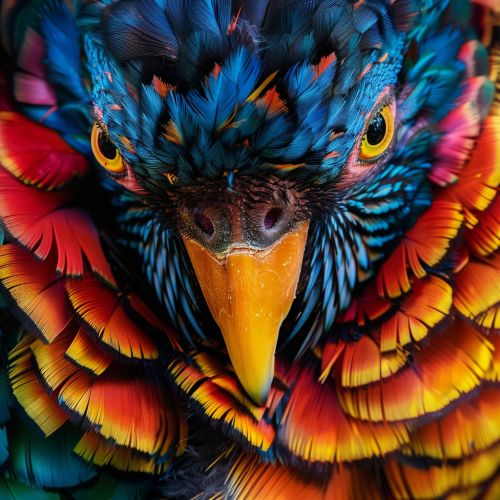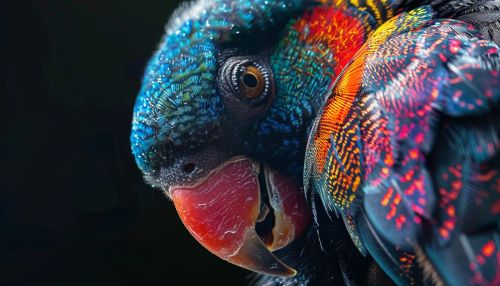Deimatic behaviour
Introduction
Deimatic behaviour, also known as threat display or startle display, is a type of animal behaviour designed to deter predators or competitors. This behaviour is characterized by sudden, dramatic displays of body parts that may be brightly coloured or unusually shaped. These displays are typically non-aggressive and are used as a defensive mechanism to scare off potential threats rather than to engage in physical confrontation.


Characteristics of Deimatic Behaviour
Deimatic behaviour is distinct from other types of defensive behaviour due to its sudden and dramatic nature. It is intended to surprise or startle a potential predator, giving the displaying animal an opportunity to escape. This behaviour is often associated with animals that have bright, contrasting colours or unusual body shapes, which are revealed or emphasized during the display.
The effectiveness of deimatic behaviour is largely dependent on the element of surprise. If a predator is not startled or deterred by the display, the displaying animal may be at risk. Therefore, deimatic behaviour is typically used as a last resort when other defensive strategies, such as camouflage or mimicry, have failed.
Examples of Deimatic Behaviour
Many different types of animals exhibit deimatic behaviour, including insects, reptiles, birds, and mammals. Some examples include:
Insects
The peacock spider (Maratus volans) is a well-known example of an insect that uses deimatic behaviour. When threatened, the male peacock spider will raise its brightly coloured abdomen and spread its legs in a dramatic display intended to startle predators.
Reptiles
Among reptiles, the frilled lizard (Chlamydosaurus kingii) is famous for its deimatic display. When threatened, it opens its mouth wide and spreads out its large, colourful frill, making itself appear larger and more threatening to potential predators.
Birds
In the bird world, the northern mockingbird (Mimus polyglottos) is known for its deimatic behaviour. When a predator approaches its nest, the mockingbird will perform a series of rapid wing-flaps and loud calls to startle the intruder and deter it from approaching further.
Mammals
Among mammals, the African elephant (Loxodonta africana) is known for its deimatic displays. When threatened, an elephant will raise its trunk, spread its ears, and sometimes charge at the threat, all in an attempt to appear larger and more intimidating.
Evolution of Deimatic Behaviour
The evolution of deimatic behaviour is thought to be driven by the benefits of avoiding predation. Animals that can effectively startle or deter predators are more likely to survive and reproduce, passing on their deimatic traits to their offspring.
However, the evolution of deimatic behaviour is also influenced by the costs associated with these displays. Deimatic displays often involve the use of energy and resources, and may also attract unwanted attention from other predators. Therefore, animals must balance the benefits of deterring predators with the costs of performing these displays.
Deimatic Behaviour and Human Interaction
Human activities can impact animals that rely on deimatic behaviour for survival. For example, habitat destruction can reduce the effectiveness of deimatic displays by removing the cover that animals use to hide from predators. Pollution can also affect the visibility of deimatic displays, making them less effective at deterring predators.
On the other hand, humans can also be the target of deimatic displays. For example, hikers who encounter snakes or birds displaying deimatic behaviour may be startled and choose to retreat, thus reducing potential conflict between humans and wildlife.
